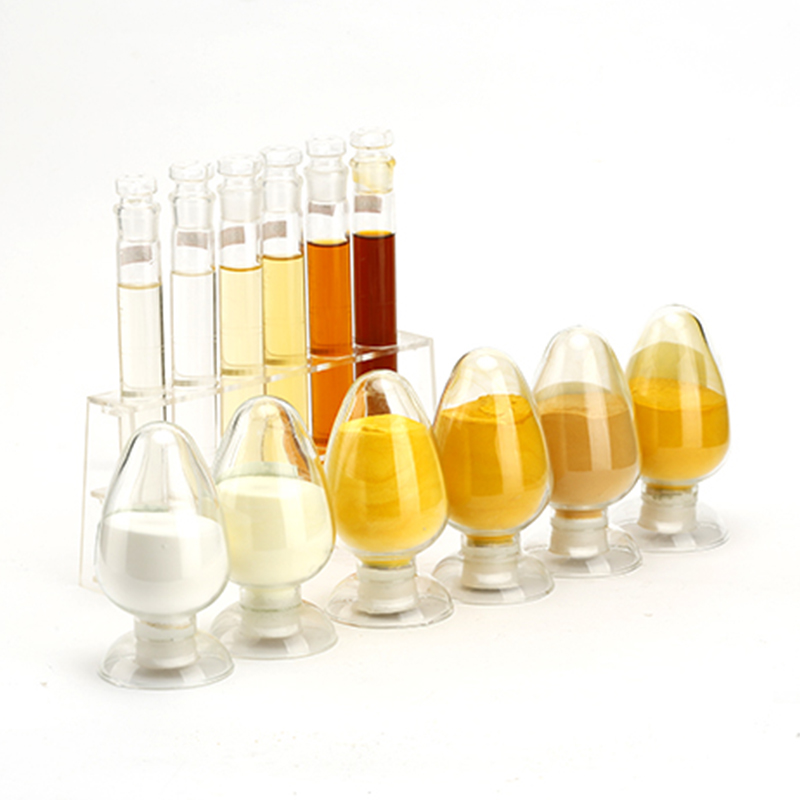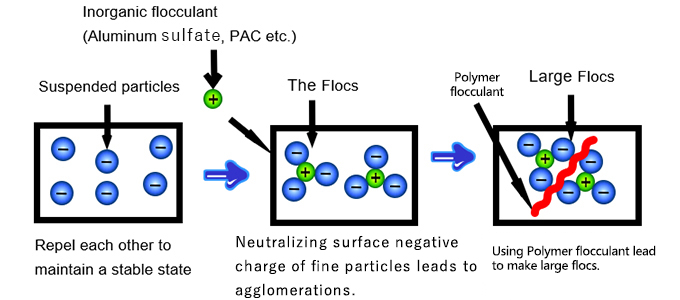

Polyaluminium chloride – often abbreviated PAC or called poly aluminum chloride – is an inorganic polymer coagulant composed of aluminum, chloride, and hydroxide. In essence, it is a polymerized form of aluminum chloride that carries a high positive charge. PAC is widely used in municipal and industrial water treatment. According to the U.S. EPA, PAC is “primarily used for coagulation in water and wastewater treatment”epa.gov, effectively binding particles into flocs. As WCS Environmental Engineering notes, PAC “is used as a coagulant in water treatment” and is “widely used for the purification of drinking water and industrial wastewater” due to its strong flocculation capability. In practical terms, PAC often comes as a dry powder or a liquid concentrate. The liquid form (polyaluminum chloride solution) is convenient for on-site dosing and immediate mixing. The table below summarizes how PAC combines chemistry and practicality:
Composition: Polymeric aluminum hydroxide-chloride complexes
Forms: Available as solid powder or as a concentrated polyaluminum chloride solution
Abbreviations: PAC, poly aluminum chloride, polyaluminium (British spelling) chloride, polymeric aluminum chloride
By neutralizing particle charges and creating polymeric hydroxides, PAC destabilizes turbidity and removes contaminants rapidly. This makes PAC chemical
a cornerstone of modern water treatment processes.
Polyaluminium chloride offers several advantages over traditional coagulants:
High Coagulation Efficiency: PAC’s polymeric aluminum species neutralize suspended colloids and organic matter very effectively. It quickly clumps fine particles into larger flocs, clarifying water faster than many other agents.
Broad pH Range: PAC remains effective across a wide pH window. Unlike some coagulants that require strict pH adjustment, PAC water treatment processes can operate from near-neutral to alkaline conditions without frequent pH correction.
Rapid Flocculation: Because of its high charge density, PAC induces swift floc formation. Studies and industry reports note that PAC “exhibits rapid flocculation,” leading to faster sedimentation and clearer filtrate. This quick action shortens processing time and improves overall treatment throughput.
Lower Sludge Volume: One of PAC’s standout benefits is reduced sludge generation. Compared to alum (aluminum sulfate) and other salts, PAC forms denser flocs that settle more compactly. Reduced sludge volume means lower disposal costs and a smaller environmental footprint.
Cost-Effective: Given its high performance, PAC often requires lower dosages to achieve the same results as traditional coagulants. Its combination of efficiency and low consumption translates to chemical cost savings. As one source summarizes, PAC’s “high efficiency, lower dosage requirements, and reduced sludge generation contribute to overall cost savings in water treatment operations”.
Environmentally Friendly: PAC is generally considered a clean, stable coagulant. It avoids introducing excessive alkalinity or acidity into the treated water. Many manufacturers, including Tairan, meet stringent quality standards, and PAC is recognized for being relatively non-toxic and safe for potable water treatment. One industry write-up notes that PAC’s advantages “stem from its effectiveness, cost-efficiency, and environmental friendliness”.
These combined benefits – efficient turbidity removal, adaptable chemistry, and economic operation – make PAC a top choice for water engineers and procurement managers seeking reliable treatment chemicals.

Municipal Water Treatment: PAC is extensively used in drinking water plants to clarify raw water. It rapidly removes suspended particles, color, and organic compounds, ensuring water meets safety standards. In fact, the EPA notes that PAC “is utilized directly in primary coagulation in drinking water and municipal wastewater treatment”.
Municipal & Industrial Wastewater: For sewage and industrial effluents, PAC enables removal of turbidity and pollutants before discharge or reuse. Tairan’s product page highlights PAC’s role in both “industrial wastewater treatment” and “municipal sewage treatment”. It is effective at stripping pollutants like dyes, oils, and heavy metals from process water.
Paper, Pulp & Textiles: In pulp/paper mills and textile plants, PAC treats rinse water and bleach effluent. It binds fine fibers and dyes, allowing clearer water to be recycled or safely discharged. The EPA reports paper and textile production as primary uses for PAC in North Americaepa.gov, underscoring its value in these sectors.
Oil & Gas Industry: PAC finds use in drilling and fracturing operations. It is used to stabilize drilling mud and as a flocculant in produced water treatment. Because PAC helps reduce fluid viscosity and remove contaminants, it improves oil recovery efficiency and wastewater management. (Polyaluminum chloride is even listed as an additive in hydraulic fracturing fluidsepa.gov.)
Other Industrial Uses: PAC is also applied in metal finishing, mining, and chemical manufacturing. For example, PAC can clarify process water or serve as a binder/retention aid in manufacturing. Its versatility extends to any setting needing bulk removal of suspended solids.
Key Applications at a Glance:
Drinking water purification
Municipal sewage and industrial wastewater treatment
Pulp, paper, and textile effluent treatment
Oil & gas drilling fluids and wastewater
Industrial process water clarification
By bridging multiple industries, PAC chemical provides procurement managers a single solution for diverse treatment needs. As the EPA profile notes, “water and wastewater treatment including industrial wastewater treatment… paper and textile production” are the primary domestic uses of PAC, highlighting its broad market relevance.
Tairan supplies PAC in both powdered and liquid (solution) forms to match customer needs. Powdered PAC typically has higher aluminum oxide content (e.g. 28–30% Al₂O₃) and is shipped as a dry solid. It offers a long shelf life and ease of transport. End users dissolve the powder in water to create a working poly aluminum chloride solution onsite.
In contrast, a pre-mixed polyaluminum chloride solution is ready for immediate dosing. Liquid PAC is often supplied at 10–18% Al₂O₃ in water, with corrosion inhibitors added. According to the EPA, “Polyaluminum chlorides [are] primarily supplied as a solution but also available as a solid or powder”epa.gov. The liquid form ensures consistent distribution of the coagulant and faster reaction in the treatment system. For example, a PAC solution can be metered directly into a clarifier tank, simplifying the feeding system.
Choosing between powder and solution depends on the operation’s needs. Cold climates or remote sites often use powder for long-term storage, whereas plants running 24/7 might prefer the convenience of liquid feed. Regardless of form, both deliver the same active polymer chemistry. As one industry guide explains, liquid PAC solutions “enable consistent dosing and quick mixing,” while solid PAC is economical and easy to transportepa.gov.
Tairan Chemical is a leading manufacturer of high-quality PAC coagulants. Here’s why procurement specialists trust our PAC chemical:
Product Expertise: Our PAC products are formulated for maximum clarity and performance. Tairan’s PAC (as described on our product page) is “an advanced inorganic coagulant widely used in drinking water treatment, industrial wastewater treatment, and municipal sewage treatment”tairanchemical.com.
Large Capacity: We operate large production lines capable of tens of thousands of tons annually. Tairan reports a capacity of 70,000+ tons per year for industrial-grade PAC and 50,000+ tons for drinking-water-grade PACtairanchemical.com. This scale ensures a stable supply for large projects and consistent product quality.
Certifications: Quality and safety are critical. Tairan’s facilities are ISO 9001 and ISO 14001 certifiedtairanchemical.com, demonstrating our commitment to quality management and environmental stewardship.
Customized Solutions: We offer both standard PAC grades and custom formulations (e.g. specific basicity or Al₂O₃ content) to meet unique process requirements. Whether you need a powder or a PAC solution concentrate, our technical team can tailor the product.
Technical Support: Our experts assist with dosing and application guidance. We also supply complementary products such as polyacrylamide (PAM) flocculantstairanchemical.com for enhanced coagulation. For instance, blending PAC with Tairan’s anionic or cationic PAM can optimize floc strength and settling rates.
By choosing Tairan’s PAC, customers gain a trusted partner with end-to-end water treatment expertise. Our track record includes supplying large municipal plants, manufacturing facilities, and water projects around the world. For example, Tairan’s website highlights successful PAC applications in diverse industriestairanchemical.comwcs-group.co.uk, ensuring you receive a coagulant proven to deliver results.